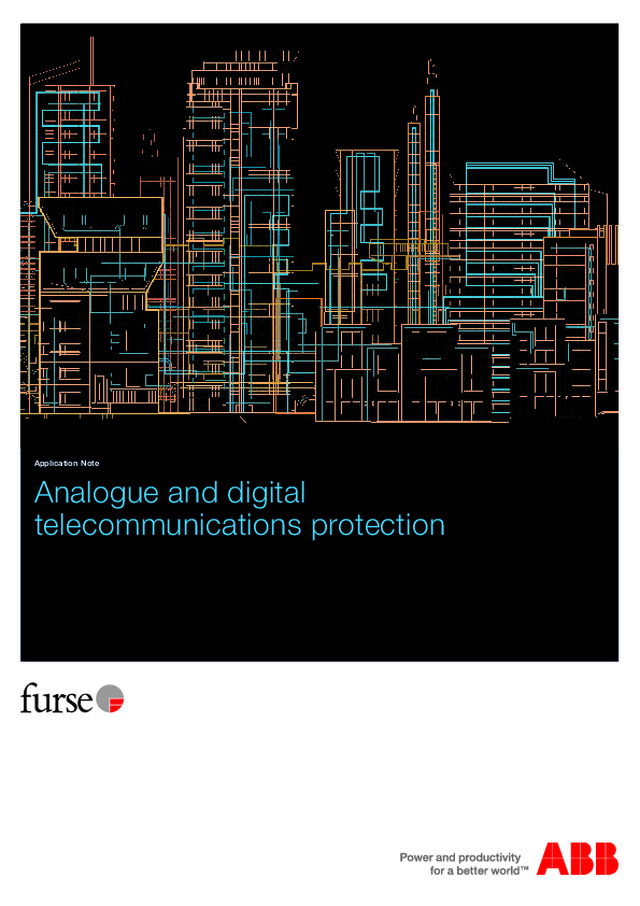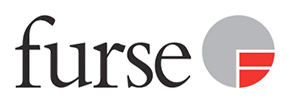Shopping Cart


Analogue and digital telecommunications protection - Elkay - 2015
Analogue and digital telecommunications protection
Analogue and digital telecommunications protection Application Note
Analogue and digital telecommunications protection 2 AN010 | Application Notes - Analogue and Digital Telecommunications Protection Overwiew PSTN stands for Public SwitchedTelephone Network. This is basically the phone lines thatare the property of the PublicTelecommunications Operator (PTO). Terminating the PSTN line is a Network Termination Point (NTP). PSTN interface When installing an analogue system the PTO will install a standard PSTN line (see Figure 1). The NTP on this line can vary depending on the system type required by the end user. It is usually a master wall socket for domestic phone lines. For complex telecommunication installaions, it is usually a connection frameor Private Branch Exchange (PBX). The PSTN lines and the NTP remain theproperty of the PTO. Only a licensed PTO can make connections to the PSTN line. The lines after the NTP are the equivalent to the ISDN S/T interface, protection can be installed on these lines without permission of the PTO. Protection There are two ways to protecttelecommunication systems, either protection on the PSTN interfaceor protection after the NTP. Protection on the PSTN interface Connections to the PSTN lines should only be made by licensed PTO’s or with prior permission of the PTO who owns the system. However if this is permitted, PSTN lines can be protected by using Furse wire-in protectors ESP SL TN, ESP TN or the 4-way ESP TNQ.See Figure 1. Protection after the NTP or PSTN interface The type of protection on standard analogue systems after the NTP varies depending on the system. Furse wire-in ESP SL TN, ESP TN(or 4-way ESP TNQ) can be used in-linewith telephone wiring. The British style jack plug-in connectionESP TN/JP can be used in between thetelephone equipment and a wall socket.Similarly the RJ11 jack plug-in connection ESP TN/RJ11-#/6 (# variants are 2, 4 and 6 wire) can be used in between the telephone equipment (usually modems or non-UKphones) and a wall socket. If an LSA-Plus PBX board is used, ESP KT1 protectors and an ESP KE10 earth bar (or the 10-way ESP K10T1 protectors) can be used. See Figure 1. Note: With normal domestic installations the NTP would usually only be a master wall socket, connection frames and PBX’s are usually only used in business or other complex telecommunication installations. Figure 1: Protection on analogue systems
Application Notes - Analogue and Digital Telecommunications Protection | AN010 3 Analogue and digital telecommunications protection Overwiew ISDN stands for Integrated ServicesDigital Networks. For ISDN installations licensed Public Telecommunications Operators (PTO’s) will use normal PSTN(analogue) lines then terminate themwith a NT1 device, this is referred to as the Network Termination Point (NTP). After the NTP the lines are digital andare routed to ISDN data/voice terminals or ISDN modems. S/T interface or U interface? When installing an ISDN system the PTO will install a U interface (see Figure 2). The U interface remains the property of thecPTO and for basic rate ISDN installation is a 2-wire line that connects to a NT1 termination device. This termination device will also beinstalled by, and remain the property of,the PTO. Only a licensed PTO can make connections to the U interface side of the NT1 termination device. The S/T interface is the output lines of the NT1 termination device, this side of the NT1 is the property of the consumer, and therefore protection can be installed without permissionof the PTO. All ISDN devices connect to this interface in order to communicate over ISDN. In Europe the ISDN wall jacks are S/T interfaces, and ISDN modems and data/voice terminals connect to this interface. Protection There are two ways to protect telecoms systems, either protection on the U interface or protection on the S/T interface. Protection on the U interface Installation at this point offers the bestpossible protection, as all the equipment after, including the NT1 termination device, is protected. Connections to the U interface shouldonly be made by a licensed PTO or withprior permission of the PTO who ownsthe system. Usually the U interface is routed straight to the NT1 device, the Furse ESP SL TN, ESP TN or the 4-way ESP TNQ protector can be installed in series before the NT1 device. See Figure 2. Protection on the S/T interface The output (S/T interface) terminals of NT1 devices are usually RJ45 connectors. In this case Furse ESP ISDN/RJ45-4/8 (4-wire) or FurseESP ISDN/RJ45-8/8 (8-wire) protectors should be used to protect each line going to equipment requiring protection(see Application Note AN002 for information on ISDN/RJ45 protectors - contact Furse). The outputs from an NT1 device may gothrough an LSA-Plus panel before connection to ISDN data/voice terminals, in this case Furse ESP KT2 protectors and an ESP KE10 earth bar (or the 10-way ESP K10T2 protectors) can be used. See Figure 2. Note: The diagram above refers to a Basic Rate ISDN interface. A Primary Rate (30 channel) ISDN interface, although morecomplex, can be protected in exactly the same way. Figure 2: Protection on analogue systems
© Copyright ABB 2015 A N 01 0 Electronic Systems Protection Equipotential bonding and transient overvoltage surge protection Electronic Systems Protection Equipotential bonding and transient overvoltage surge protection Contact us ABB FurseUK OfficeWilford RoadNottingham NG2 1EBTel: +44 (0) 115 964 3700 Fax: +44 (0) 115 986 0071 Sales Tel: +44 (0) 333 999 9900Sales Fax: +44 (0) 333 999 9901E-Mail: [email protected] www.furse.com Note: We reserve the right to make technical changes or modify the contents of this document without prior notice. With regard to purchase orders, the agreed particulars shall prevail. ABB AG does not accept any responsibility whatsoever for potential errors or possible lack of information in this document. We reserve all rights in this document and in the subject matter and illustrations contained therein. Any reproduction, disclosureto third parties or utilization of its contents – in whole or in parts – is forbidden without prior written consent of ABB AG. Copyright © 2015 ABBAll rights reserved